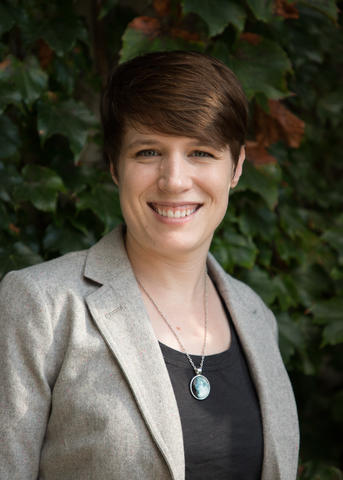
Sarah West
E-MAIL: [email protected]
PhD: 2022
PhD Thesis:
Dynamic cortical networks in spontaneous and externally-driven locomotion.
Undergraduate Institution and Major:
University of Minnesota, B.S., Neuroscience, 2015
Graduate Advisor:
Timothy Ebner, M.D., Ph.D., Department of Neuroscience
Description of Graduate Research:
My research focuses on the study of widespread cerebral cortical activation in the mouse. Using a Thy1-GCaMP6 line of transgenic mice and optically clear implanted windows, we are able to use fluorescent calcium imaging to view neuronal activity with high spatial and temporal resolution. The brain exhibits complex bilateral patterns of activation that vary over time. My project looks to analyze these patterns and correlate them to behaviors such as rest, locomotion, or whisker movement. I use mesoscopic calcium imaging to record activity across the mouse cortex during rest and behavior, and I analyze how this activity changes in different locations over time using computational models.
Graduate Publications:
- West SL, Aronson JD, Popa LS, Feller KD, Carter RE, Chiesl WM, Gerhart ML, Shekhar AC, Ghanbari L, Kodandaramaiah SB, Ebner TJ. Wide-field calcium imaging of dynamic cortical networks during locomotion. Cereb Cortex. 2022;32(12):2668-2687.
- Ghanbari L, Carter RE, Rynes ML, Dominguez J, Chen J, Naik A, Hu JJ, Kader Sagar MA, Haltom L, Mossazghi N, Grey MM, West SL, Eliceiri KW, Ebner T, Kodandaramaiah SB. See-Shells: Cortex-wide neural interfacing via transparent polymer skulls. Nat Commun. 2019 Apr 2;10(1):1500
Graduate Abstracts:
- West S, Popa LS, Carter RE, Chen G, Aronson JD, Ghanbari L, Kadandaramaiah SB, Ebner TJ. Mesoscopic imaging of the mouse cerebral cortex network dynamics during spontaneous behavior. Soceity for Neuroscience, 2018.
- Popa LS, West S, Carter RE, Chen G, Aronson JD, Ghanbari L, Kadandaramaiah SB, Ebner TJ. Functional interactions within the mouse cerebral cortical network during spontaneous behavior. Soceity for Neuroscience, 2018.
Graduate Awards/Honors:
- American Legion Brain Sciences Award 2021.
- MnDrive Informatics Fellowship 2020-2021
- NIMH T32 Fellow: Using Computation to Make Breakthroughs in Neuroscience 2018-2020
- MENSA Karen Cooper Memorial Scholarship 2019
Professional Societies:
- Society for Neuroscience
- American Association for the Advancement of Science
Thesis Committee Members:
Matthew Chafee, Ph.D., Department of Neuroscience (Chair)
Timothy Ebner, M.D., Ph.D., Department of Neuroscience
Esther Krook-Magnuson, Ph.D., Department of Neuroscience
Tay Netoff, Ph.D., Department of Biomedical Engineering
Gordon Smith, Ph.D., Deparment of Neuroscience
Undergraduate Awards:
Graduated with Honors, Summa Cum Laude, 2015
Undergraduate or Post-Bac Research:
During undergraduate, I studied movement planning and preparation in humans using magnetoencephalography (MEG) with Dr. Giuseppe Pellizzer. I also studied the electrophysiology of epilepsy in the lab of Dr. Theoden Netoff. There, I used both in vitro experiments and computational models to analyze seizure activity in the hippocampus.
What Got You Interested In Research?
I don’t think I ever accepted that one day I’d be completely trained for a job and would stop learning. Research is learning for a living.
Why Did You Choose MN?
Neuroscience at the University of Minnesota is well-respected and offers a large variety of opportunities. The Twin Cities have a vibrant culture that balances both a big city and a hometown feel.
Student Mentor and the Best Advice They Gave:
Amanda Barks: She told me that my GPN classmates would be one of my most important resources during graduate school, and that I should be sure to reach out to them early on.
